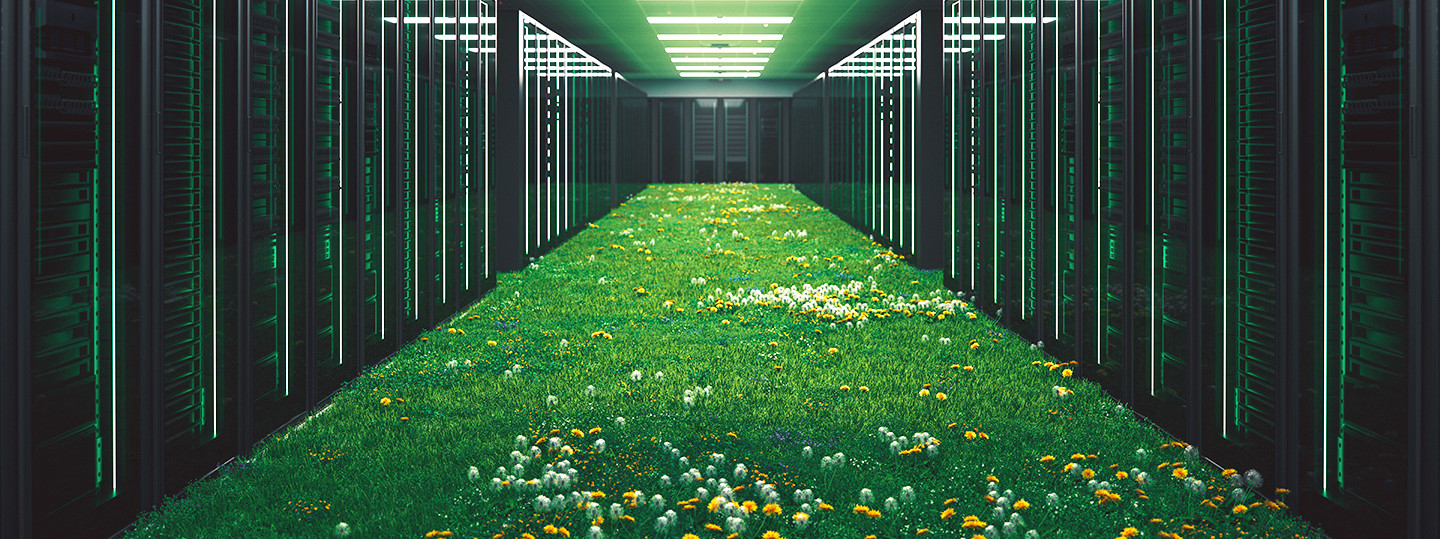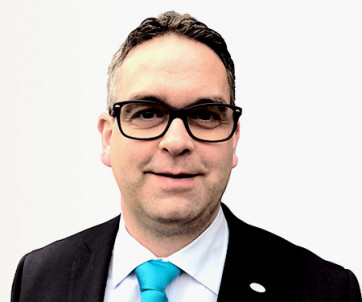
Sustainability in data centers - when pent-up demand meets contemporary solutions
The topics of energy and resource efficiency are high on the agenda for many IT service providers. No wonder, as the energy transition poses real challenges for data center operators in particular. However, there are also good solutions and successful examples of how sustainability can be implemented in data centers in practice. Find out more in this article.
Why sustainability is so important for data centers
Sustainability is a pressing issue for data centers. After all, there are only six years left until many operators want to meet the requirements of the Climate Neutral Data Center Pact (CNDCP). This is a self-regulatory initiative of the IT industry. 25 companies and 17 associations from across Europe have committed to making their data centers climate-neutral by 2030. Many other IT service providers have followed this mission statement in recent years. The aim is to take concrete measures to reduce energy consumption and increase energy efficiency. This is urgently needed in the IT sector. After all, the rapid digitalization of our society means that the demand for computing power is constantly increasing. According to the study "Data centers in Germany: Current market developments - Update 2023" by the Borderstep Institute for Innovation and Sustainability on behalf of bitkom, the capacities of data centers in Germany grew by over 90 percent between 2010 and 2022, measured in IT connection performance. According to the digital association, energy demand increased by 70% to 17.9 billion kilowatt hours in the same period.
Greener it shall become: The energy transition for data centers
According to the CNDCP targets, data center operators must switch 75% of their electricity requirements to renewable energies or sustainable energy concepts by next year (2025). That doesn't leave much time to take action. By 2030, electricity is to be sourced entirely from green energy sources. The goal is therefore Real Zero, which is unavoidable in the IT sector! Many data center operators have this fact on their radar - at least those who adhere to the CNDCP guidelines. However, it should be mentioned that operators must operate in a climate-neutral manner in the long term anyway, in line with the European Green Deal and the German government's climate targets.
The energy transition in the IT sector poses major challenges for many companies. After all, the growing demand and AI-related pressure to expand in IT must be reconciled with the special features of renewable energies. This is a complex task, especially for IT companies. After all, server systems always need electricity - and lots of it. In addition, many inner-city grids are not designed for this high power consumption. Therefore, additional solutions for storage concepts are needed to balance out the production cycles of renewable energies. There is also a lack of sustainable solutions for cooling server systems in many places.
Sustainability for data centers in practice
Last but not least, restructuring existing supply concepts remains a cost issue. According to surveys of data center operators conducted as part of the aforementioned study by the Borderstep Institute for Innovation and Sustainability on behalf of bitkom, at least 50 percent of data centers in Germany already have green electricity contracts. However, there is clearly another half where there is still a need for action. In addition, the IT industry in particular, which is so fast in increasing the performance of technical components, needs flexibly scalable supply concepts in order to be well positioned in the long term. So is it even possible for a data center to be truly sustainable? And with regard to the CNDCP, in such a short space of time - without compensation through guarantees of origin and certificates?
In fact, yes! Today, there are many sensible and economical concepts for converting data centers to a green energy supply. It is particularly important to take a holistic view of control and operation. Modern automation solutions and building information modeling can also make a valuable contribution. You can find out more about this in our magazine article "Holism for climate-neutral data centers".
Energy supply for dataR - a prime example of sustainability in data centers
dataR is a co-location data center operator based in Rellingen near Hamburg. The company is currently building a modern co-location data center there. The topics of green electricity and sustainability for data centers are very important to dataR. The IT company is currently implementing a promising supply concept - together with us. In close cooperation between dataR and the Kähler Bau and ENGIE Deutschland consortium, one of the most energy-efficient data centers in Germany is being built. As the general contractor, we are taking on all services from basic planning onwards: the construction and the technology on site.
It will be certified to availability class "VK-3" in accordance with the "DIN EN 50600" standard and the "Blue Angel" eco-label. The ground-breaking ceremony for the project took place in February 2024.
"Data centers in Europe are facing the challenging task of becoming climate-neutral by 2030. Our project with dataR shows that the climate-neutral data center is absolutely possible for any size of data center, even under complex conditions - and thus sets an example for the industry."
Maximilian Busch, Head of Sales & Engineering at ENGIE Deutschland in the Building Technologies division
The new supply concept at a glance
The data center with a connected load of over six megawatts (MW) meets all requirements in terms of operational reliability, efficiency and sustainability.
- We are implementing a redundant emergency power supply with three systems, each with an output of 3,500 kilovolt amperes (kVA).
- Six water-cooled chillers are used to cool the 2,500 square meters of server space. These have a cooling capacity of 5,100 kilowatts (kW) and have a special feature: at dataR, the cooling systems are operated with ammonia. This makes the data center one of the first of its kind in Germany to use a natural, greenhouse gas-free refrigerant on this scale.
- Four dry cooling units, each with an output of two megawatts (MW), round off the supply concept.
Further information on the project can be found in our press release "Pioneer for sustainability: dataR and ENGIE Deutschland achieve Blue Angel certification".
Do you have any questions about sustainability for data centers and a green energy supply? Then get in touch with us. The experts at ENGIE Deutschland will be happy to advise you!
Our Expert










